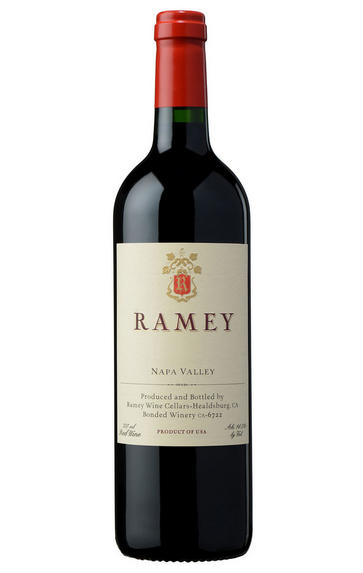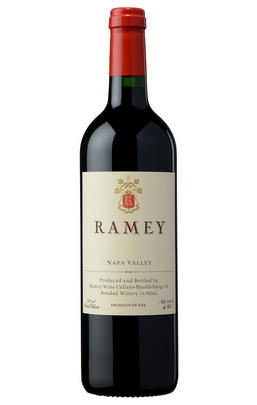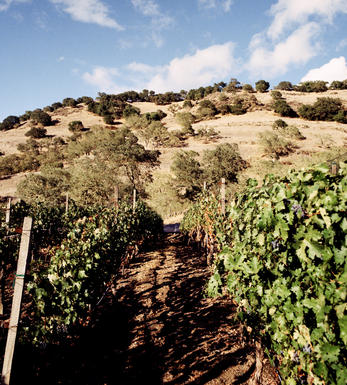
2017 Ramey Template, Napa Valley, California, USA

About this WINE

Ramey Wine Cellars
David Ramey built his reputation at such luminary wineries as Matanzas Creek and Dominus before he and his wife Carla established Ramey Wine Cellars in 1996.
From his earliest experiences in wine, David has been inspired by European styles. Having worked in France at Château Pétrus, he dedicated himself to applying the old-world techniques he absorbed to the perfectly ripe fruit of Napa and Sonoma. At a time when technical winemaking, straight out of the textbook, was the norm in California this made David something of a pioneer on the west coast. He remains one of the most influential winemakers in North America.
David and his wife Carla started small, their first two wines were Chardonnays from the Hyde and Hudson vineyards. To tell the story of their terroir David vinified each in the same fashion, leaving only the quality of the fruit to express the personality of the vineyards. This is a practice continued today across the range of Chardonnays.
In common with most Californian wineries, the majority of grapes are bought in rather than from estate-owned vines. David’s deep understanding of the region and its vineyards have ensured that he only works with great vineyards farmed by great people. His long-standing relationships allowing for a collaborative approach to get the best quality from each site and exemplify their character.
Chardonnay and Cabernet Sauvignon play the leading roles at Ramey, with most of the Chardonnay coming from the cool Sonoma where proximity to the coast gives more exposure to the morning fogs. The Cabernet is all classic Napa. A Sonoma Syrah was added in 2004 and they have subsequently diversified the range with parcels of Merlot, Cabernet Franc and Pinot Noir which David could not resist trying his hand at.
David believes that better farming is the key to California’s continued and growing success. They manage vineyards they lease themselves using organic methods and work hand in hand with their growers to promote sustainable and low intervention methods.
In the winery David’s approach is recognisably Burgundian. Grapes are pressed without crushing to avoid skin contact. Alcoholic fermentation takes place in barrel followed by aging on fine lees and battonage. Malolactic fermentation is allowed to happen. David’s view is that the answer to flabby over-oaked Chardonnay’s once popular with the critics is not to go 180° but to take a balanced approach. This is precisely what he has always done – making wines for critics has never been part of the mantra.

Napa Valley
North Coast's Napa Valley is California's most famous viticultural area (AVA), claiming some of the most expensive agricultural land in the world and producing wines of ‘cult’ status.
Its 16,000 ha of vines lie over a strip (40 miles long-5 miles wide) of diverse soils (clay, gravely, volcanic), with its northernmost end on the side of Mountain Helena and its foot in San Francisco Bay. The valley is framed by two mountains ranges Vaca (to the north) and Mayacamas (to the south), yet the main climatic influence is the cool wind and fog that is sucked in from San Pablo Bay during the afternoon, allowing grapes to ripen slowly and evenly.
The area enjoys a variety of unique microclimates, as temperatures can vary dramatically as much as 15 degrees, from the north to the south end of the valley. These differences have led to the creation of several sub-AVAs (14 in total) including:
Atlas Peak, Chiles Valley District, Diamond Mountain District, Howell Mountain, Los Carneros, Mt. Veeder, Oakville, Rutherford, St. Helena, Spring Mountain District, Stags Leap District, Yountville, Wild Horse Valley and Oak Knoll District. The Calistoga AVA is still pending approval.
Both the “Napa Valley” designation and the sub-AVA name must appear on the wine label simultaneously, with the exception of wines from the Carneros AVA, which is shared between the Napa Valley and the Sonoma County.
Cabernet Sauvignon is the undisputed king of Napa grapes, occupying over 45% of the vineyard acreage, followed by (predominantly) Chardonnay, Sauvignon Blanc, Chenin Blanc, Riesling, Zinfandel, Merlot, Cab. Franc and to a lesser extent Petite Sirah, Sangiovese, Barbera, Dolcetto.
Recommended Producers
Frog's Leap, Dominus, David Ramey, Viader, Stag's Leap Cellars, Paras Vineyards, Heitz.

Merlot/Cabernet Franc
Merlot and Cabernet Franc are grape varieties commonly used in Bordeaux-style blends, particularly in the Bordeaux region of France. When these two grapes are blended, they can create a wine that combines the best characteristics of each variety.
Merlot is known for its smoothness, soft tannins, and ripe fruit flavours. It often contributes black cherry, plum, and chocolate flavours to the blend. The grapes are relatively easy to grow and ripen earlier than other Bordeaux varieties, making them versatile for blending.
Cabernet Franc, on the other hand, adds structure, depth, and complexity to the blend. It typically brings aromas of red fruits such as raspberry and strawberry, along with herbal notes like bell pepper and tobacco. These grapes have thinner skins and can be more challenging to cultivate, requiring specific growing conditions to reach their full potential.
When Merlot and Cabernet Franc are combined, the result is a well-balanced wine with various flavours and aromas. The blend often exhibits a Bordeaux wine's medium to full body, along with a smooth texture and moderate tannins. The specific flavour profile can vary depending on the proportions of each grape in the blend and the terroir and winemaking techniques employed.


Buying options
Add to wishlist
wine at a glance
Delivery and quality guarantee